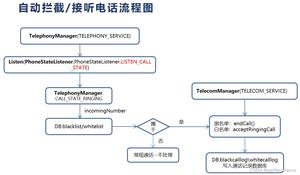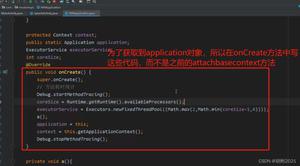Android使用RSA加密实现接口调用时的校验功能
RSA算法是一种非对称加密算法,那么何为非对称加密算法呢?
一般我们理解上的加密是这样子进行的:原文经过了一把钥匙(密钥)加密后变成了密文,然后将密文传递给接收方,接收方再用这把钥匙(密钥)解开密文。在这个过程中,其实加密和解密使用的是同一把钥匙,这种加密方式称为对称加密。
而非对称加密就是和对称加密相对,加密用的钥匙和解密所用的钥匙,并不是同一把钥匙。非对称加密首先会创建两把钥匙,而这两把钥匙是成对的分别称为公钥和私钥。在进行加密时我们使用公钥进行加密,而在解密的时候就必须要使用私钥才能进行解密,这就是非对称加密算法。
假如使用非对称加密,甲发送消息给乙,这时候乙会预先创建好两把钥匙,私钥乙自己保存好,然后把公钥发送给甲,甲使用公钥对信息进行加密,然后传给乙。最后乙使用自己的私钥对数据进行解密。这个过程中,公钥还是有可能被第三者所截获,但是不同的是,这个第三者纵然得到了公钥,也无法解开密文,因为解密密文所需要的私钥从始至终一直在乙的手里。因此这个过程是安全的。
在一个Android应用中录音完成后将录音文件上传到SpringBoot搭建的后台接口中。
由于Android应用中没有登录功能,所以需要对一串自定义字符串进行加密并传输,然后在SpringBoot后台进行解密验证。防止上传接口暴露。
实现
首先在SpringBoot端新建一个RsaUtils工具类
import com.sun.org.apache.xerces.internal.impl.dv.util.Base64;
import java.io.ByteArrayOutputStream;
import java.security.KeyFactory;
import java.security.KeyPair;
import java.security.KeyPairGenerator;
import java.security.PrivateKey;
import java.security.PublicKey;
import java.security.Signature;
import java.security.spec.PKCS8EncodedKeySpec;
import java.security.spec.X509EncodedKeySpec;
import java.util.Base64;
import javax.crypto.Cipher;
//java 后端
public class RsaUtils {
//私钥
public static String privateKey = "自己生成的私钥";
//公钥
private static String publicKey = "自己生成的公钥";
/**
* RSA最大加密明文大小
*/
private static final int MAX_ENCRYPT_BLOCK = 117;
/**
* RSA最大解密密文大小
*/
private static final int MAX_DECRYPT_BLOCK = 128;
/**
* 获取密钥对
*
* @return 密钥对
*/
public static KeyPair getKeyPair() throws Exception {
KeyPairGenerator generator = KeyPairGenerator.getInstance("RSA");
generator.initialize(1024);
return generator.generateKeyPair();
}
/**
* 获取私钥
*
* @param privateKey 私钥字符串
* @return
*/
public static PrivateKey getPrivateKey(String privateKey) throws Exception {
KeyFactory keyFactory = KeyFactory.getInstance("RSA");
byte[] decodedKey = com.sun.org.apache.xerces.internal.impl.dv.util.Base64.decode(new String(privateKey.getBytes()));
PKCS8EncodedKeySpec keySpec = new PKCS8EncodedKeySpec(decodedKey);
return keyFactory.generatePrivate(keySpec);
}
/**
* 获取公钥
*
* @param publicKey 公钥字符串
* @return
*/
public static PublicKey getPublicKey(String publicKey) throws Exception {
KeyFactory keyFactory = KeyFactory.getInstance("RSA");
byte[] decodedKey = Base64.decode(publicKey);
X509EncodedKeySpec keySpec = new X509EncodedKeySpec(decodedKey);
return keyFactory.generatePublic(keySpec);
}
/**
* RSA加密
*
* @param data 待加密数据
* @param publicKey 公钥
* @return
*/
public static String encrypt(String data, PublicKey publicKey) throws Exception {
Cipher cipher = Cipher.getInstance("RSA");
cipher.init(Cipher.ENCRYPT_MODE, publicKey);
int inputLen = data.getBytes().length;
ByteArrayOutputStream out = new ByteArrayOutputStream();
int offset = 0;
byte[] cache;
int i = 0;
// 对数据分段加密
while (inputLen - offset > 0) {
if (inputLen - offset > MAX_ENCRYPT_BLOCK) {
cache = cipher.doFinal(data.getBytes(), offset, MAX_ENCRYPT_BLOCK);
} else {
cache = cipher.doFinal(data.getBytes(), offset, inputLen - offset);
}
out.write(cache, 0, cache.length);
i++;
offset = i * MAX_ENCRYPT_BLOCK;
}
byte[] encryptedData = out.toByteArray();
out.close();
// 获取加密内容使用base64进行编码,并以UTF-8为标准转化成字符串
// 加密后的字符串
return new String(Base64.encode((encryptedData)));
}
/**
* RSA解密
*
* @param data 待解密数据
* @param privateKey 私钥
* @return
*/
public static String decrypt(String data, PrivateKey privateKey) throws Exception {
Cipher cipher = Cipher.getInstance("RSA");
cipher.init(Cipher.DECRYPT_MODE, privateKey);
byte[] dataBytes = Base64.decode(data);
int inputLen = dataBytes.length;
ByteArrayOutputStream out = new ByteArrayOutputStream();
int offset = 0;
byte[] cache;
int i = 0;
// 对数据分段解密
while (inputLen - offset > 0) {
if (inputLen - offset > MAX_DECRYPT_BLOCK) {
cache = cipher.doFinal(dataBytes, offset, MAX_DECRYPT_BLOCK);
} else {
cache = cipher.doFinal(dataBytes, offset, inputLen - offset);
}
out.write(cache, 0, cache.length);
i++;
offset = i * MAX_DECRYPT_BLOCK;
}
byte[] decryptedData = out.toByteArray();
out.close();
// 解密后的内容
return new String(decryptedData, "UTF-8");
}
/**
* 签名
*
* @param data 待签名数据
* @param privateKey 私钥
* @return 签名
*/
public static String sign(String data, PrivateKey privateKey) throws Exception {
byte[] keyBytes = privateKey.getEncoded();
PKCS8EncodedKeySpec keySpec = new PKCS8EncodedKeySpec(keyBytes);
KeyFactory keyFactory = KeyFactory.getInstance("RSA");
PrivateKey key = keyFactory.generatePrivate(keySpec);
Signature signature = Signature.getInstance("MD5withRSA");
signature.initSign(key);
signature.update(data.getBytes());
return Base64.encode(signature.sign());
}
/**
* 验签
*
* @param srcData 原始字符串
* @param publicKey 公钥
* @param sign 签名
* @return 是否验签通过
*/
public static boolean verify(String srcData, PublicKey publicKey, String sign) throws Exception {
byte[] keyBytes = publicKey.getEncoded();
X509EncodedKeySpec keySpec = new X509EncodedKeySpec(keyBytes);
KeyFactory keyFactory = KeyFactory.getInstance("RSA");
PublicKey key = keyFactory.generatePublic(keySpec);
Signature signature = Signature.getInstance("MD5withRSA");
signature.initVerify(key);
signature.update(srcData.getBytes());
return signature.verify(Base64.decode(sign));
}
/* public static void main(String[] args) {
try {
// 生成密钥对
KeyPair keyPair = getKeyPair();
String privateKey = new String(Base64.getEncoder().encode(keyPair.getPrivate().getEncoded()));
String publicKey = new String(Base64.getEncoder().encode(keyPair.getPublic().getEncoded()));
System.out.println("私钥:" + privateKey);
System.out.println("公钥:" + publicKey);
// RSA加密
*//* String data = "待加密的文字内容";
String encryptData = encrypt(data, getPublicKey(publicKey));
System.out.println("加密后内容:" + encryptData);
// RSA解密
String decryptData = decrypt("encryptData ", getPrivateKey(privateKey));
System.out.println("解密后内容:" + decryptData);
// RSA签名
String sign = sign(data, getPrivateKey(privateKey));
// RSA验签
boolean result = verify(data, getPublicKey(publicKey), sign);
System.out.print("验签结果:" + result);*//*
} catch (Exception e) {
e.printStackTrace();
System.out.print("加解密异常");
}
}*/
}
然后运行此工具类的main方法中的生成密钥对的方法,获取到生成的公钥和密钥对。
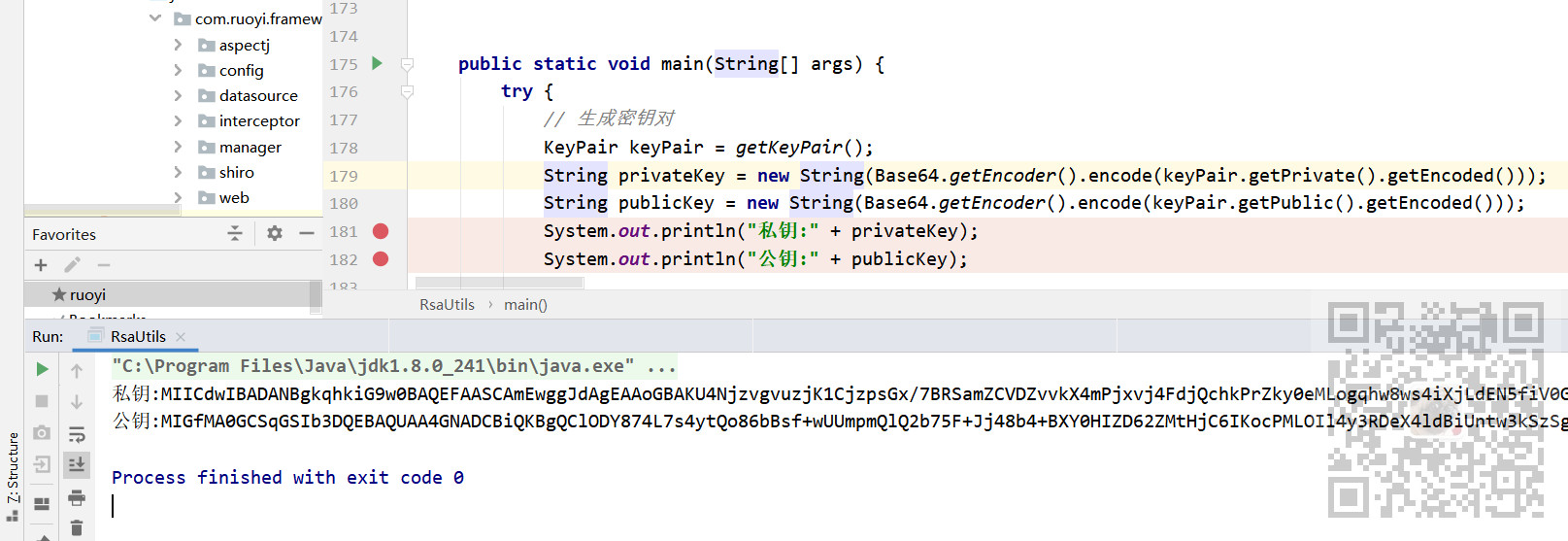
然后将它们赋值到最上面的privateKey和publicKey。
然后在Android端中也新建一个工具类RsaUtils
package com.badao.badaoimclient.common;
import android.util.Base64;
import java.io.ByteArrayOutputStream;
import java.security.KeyFactory;
import java.security.PublicKey;
import java.security.spec.X509EncodedKeySpec;
import javax.crypto.Cipher;
public class RsaUtils{
//公钥
public static String publicKey="跟Java端同样的公钥";
/**
* RSA最大加密明文大小
*/
private static final int MAX_ENCRYPT_BLOCK = 117;
/**
* RSA最大解密密文大小
*/
private static final int MAX_DECRYPT_BLOCK = 128;
/**
* 获取公钥
*
* @param publicKey 公钥字符串
* @return
*/
public static PublicKey getPublicKey(String publicKey) throws Exception {
KeyFactory keyFactory = KeyFactory.getInstance("RSA");
byte[] decodedKey =Base64.decode(publicKey.getBytes(), Base64.DEFAULT);
X509EncodedKeySpec keySpec = new X509EncodedKeySpec(decodedKey);
return keyFactory.generatePublic(keySpec);
}
/**
* RSA加密
*
* @param data 待加密数据
* @param publicKey 公钥
* @return
*/
public static String encrypt(String data, PublicKey publicKey) throws Exception {
Cipher cipher ;
cipher= Cipher.getInstance("RSA/ECB/PKCS1Padding");
cipher.init(Cipher.ENCRYPT_MODE, publicKey);
int inputLen = data.getBytes().length;
ByteArrayOutputStream out = new ByteArrayOutputStream();
int offset = 0;
byte[] cache;
int i = 0;
// 对数据分段加密
while (inputLen - offset > 0) {
if (inputLen - offset > MAX_ENCRYPT_BLOCK) {
cache = cipher.doFinal(data.getBytes(), offset, MAX_ENCRYPT_BLOCK);
} else {
cache = cipher.doFinal(data.getBytes(), offset, inputLen - offset);
}
out.write(cache, 0, cache.length);
i++;
offset = i * MAX_ENCRYPT_BLOCK;
}
byte[] encryptedData = out.toByteArray();
out.close();
// 获取加密内容使用base64进行编码,并以UTF-8为标准转化成字符串
// 加密后的字符串
return new String(Base64.encode(encryptedData, Base64.DEFAULT));
}
}
这里的公钥与上面生成的公钥一致。
注意着两个工具类的区别
在Android工具类中的Base64引入的是
import android.util.Base64;
而在Java中引入的Base64是
import com.sun.org.apache.xerces.internal.impl.dv.util.Base64;
注意这里为什么不是引用java.util.Base64,因为会有换行导致的转移字符的问题。
然后在Android中对字符串进行加密
//获取加密字符串
String escode = "";
try {
escode = RsaUtils.encrypt(key,RsaUtils.getPublicKey(RsaUtils.publicKey));
} catch (Exception e) {
e.printStackTrace();
}
将其作为接口调用的参数传递到Java中进行解密
if(decode.equals(RsaUtils.decrypt(key,RsaUtils.getPrivateKey(RsaUtils.privateKey))))
{
try
{
// 上传文件路径
String filePath = RuoYiConfig.getUploadPath();
// 上传并返回新文件名称
String fileName = FileUploadUtils.upload(filePath, file);
String url = serverConfig.getUrl() + fileName;
AjaxResult ajax = AjaxResult.success();
ajax.put("fileName", fileName);
ajax.put("url", url);
return ajax;
}
catch (Exception e)
{
return AjaxResult.error(e.getMessage());
}
}else {
return AjaxResult.error("非法访问");
}
这样就限制了只能通过指定的移动端对文件上传接口进行访问。
在移动端调用接口进行测试

可见调用接口前加密成功
并且能用过后台接口的解密校验
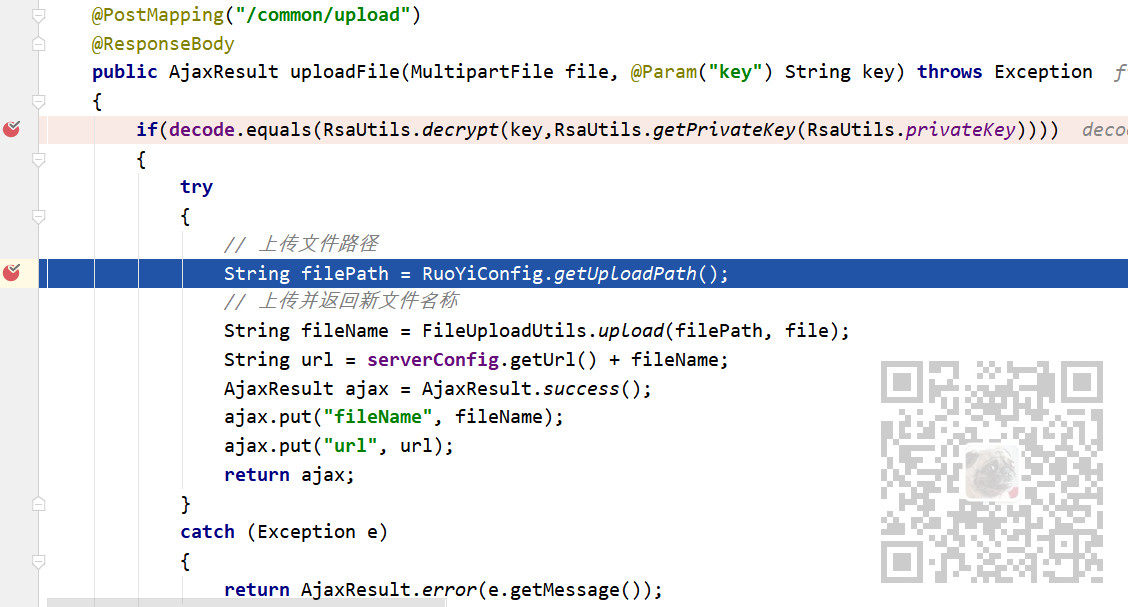
这样别的第三方请求接口就没法请求
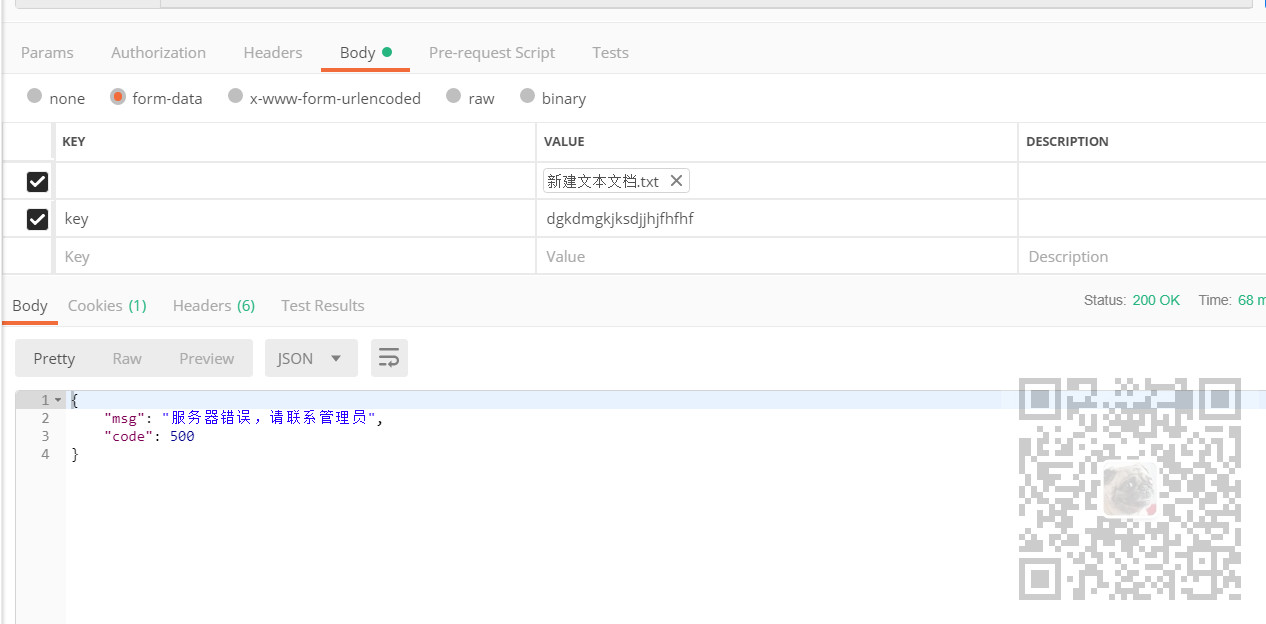
以上就是Android使用RSA加密实现接口调用时的校验功能的详细内容,更多关于Android rsa加密接口调用的资料请关注其它相关文章!
以上是 Android使用RSA加密实现接口调用时的校验功能 的全部内容, 来源链接: utcz.com/p/243202.html


